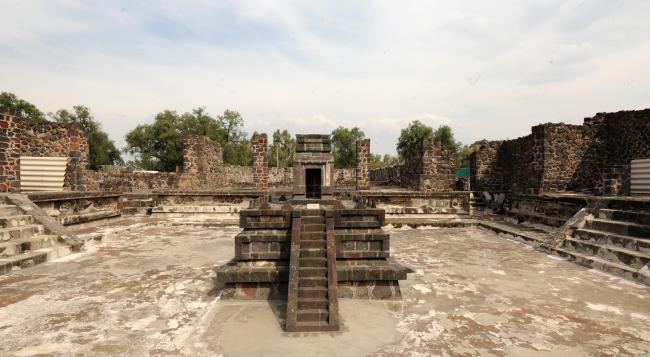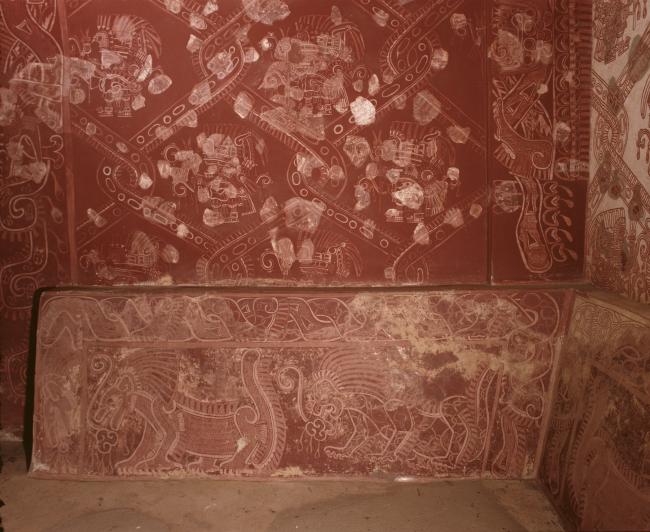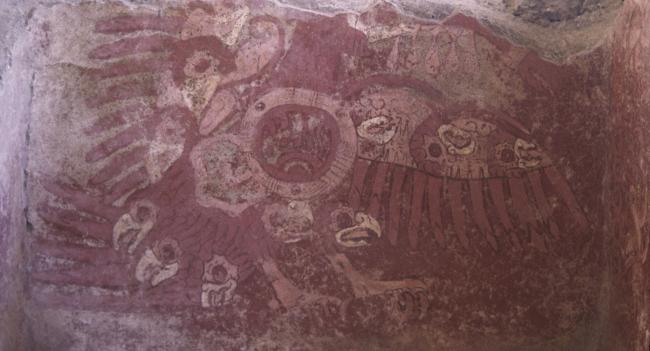
Atetelco
Estructura
It is located northeast of Tetitla and its name means “in the stone wall by the water”. The explored part is made up of several levels: in one of them is the White Patio, formed by three temples dating from the early stages of the city, between 300 and 400 AD. In a superior constructive level is the Red Patio, integrated by rooms built on pyramidal bases and a colorful altar. The decoration of the bases and lateral walls of the patio is related to the military activity.
Procession of jaguars and coyotes: It was found in the walls of the Portico 2 of the East Temple, in the White Patio; the scene refers to a procession of coyotes and jaguars that walk one behind the other; in murals 1 and 4 a reticulated jaguar goes in front of a coyote, oriented outwards; in murals 2 and 3 the coyote is followed by the jaguar and they go towards the central door.
The coyotes are delineated by thin intense and clear red lines, on their body there are continuous short lines that simulate the animal's skin; on their elbows there are tufts of long hair and on the back, legs and tail there is a band of small triangular feathers; the headdress consists of a diadem with long and small feathers in the shape of a fan. The jaguars have a reticulated body including the legs and tail; the upper part of the tail, its back and the back profile of its legs have similar ornaments to those of the coyotes; the difference between both is the shape of its snout, nose and eyes: the coyote's snouts are elongated, these animals show a bulging nose and its teeth are small, while the jaguar's snout is shorter, its fangs are more curved and it has a forked tongue. Each mural is framed with a border delimited by thin parallel lines.
Fuente, Beatriz de la (coord.), 1995, La pintura mural prehispánica en México Teotihuacán, volume I, Mexico, UNAM/IIE.
Bird with chicks: This mural was found on the southeast side of the complex during excavations in 1994. It consists of two red fragments representing birds with outstretched wings and chicks' heads around their bodies. It has been covered for future research.
Fuente, Beatriz de la (coord.), 1995, La pintura mural prehispánica en México Teotihuacán, volume I, Mexico, UNAM/IIE.




